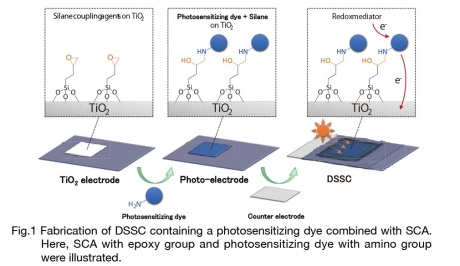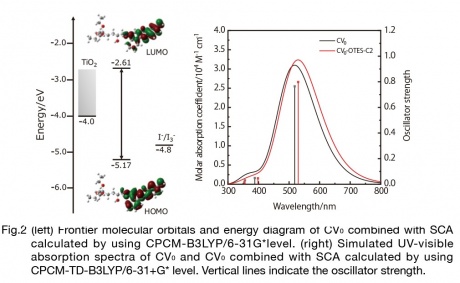- Home
- Faculty Members
- Department of Applied Chemistry and Food Science
- Tatsuya Takeshita
Faculty of Environmental and Information Sciences
Department of Applied Chemistry and Food Science
- Key words
- Photocatalysis, Titanium dioxide, Self-assembled monolayers, Silane coupling agents, Dye-sensitized solar cell

Doctor(Engineering) / Lecturer
Tatsuya Takeshita
Education
Department of Environmental and Biological Chemistry, Fukui University of Technology, Department of Applied Science and Engineering, Environmental and Biological Chemistry Course, Fukui University of Technology (Master/Doctor Course; skip the master 2nd-grade)
Professional Background
WORLD INTEC CO., LTD. R&D (Assigned to chemical manufacturers)
Consultations, Lectures, and Collaborative Research Themes
Fabrication and characterization of dye-sensitized solar cell,
Quantum chemical calculation by using Gaussian
Main research themes and their characteristics
「A study of dye-sensitized solar cell containing a photosensitizing dye combined with silane coupling agents」
Surface modifier (silane coupling agents (SCA), phosphonic acid derivatives, alkanethiols, and so on) is modified a surface of materials, and add the functional such as adhesiveness and hydrophobicity. In our laboratory, we investigates the increase of photocatalytic activity and addition of functional for the titanium dioxide (TiO2) with surface modification. In this poster, we describe the study of TiO2 based dye-sensitized solar cell (DSSC) containing a SCA (Fig.1).
In this study, we investigates the modification of TiO2 surface deposited on the substrate by SCA based self-assembles monolayers (SAMs), and binding between the terminal functional group of SCA and photosensitizing dye. The aim of this study is control the orientation and/or arrangement of photosensitizing dye by SCA, and increase the photovoltaic conversion efficiency of DSSC. Currently, we investigate the properties of photosensitizing dye combined with SCA by using quantum chemical calculation.
Fig. 2(left) illustrated the frontier molecular orbitals of photosensitizing dye combined with SCA calculated by Gaussian and the energy diagram. Here, neutral cresyl violet (CV0) is selectes as a photosensitizing dye. Lowest unoccupied molecular orbital (LUMO) level was higher than the conduction band of TiO2 (-4.0 eV). Additionally, highest occupied molecular orbital (HOMO) level was lower than the redox potential of triiodide ion (-4.8 eV) used as an electrolyte. These results indicate the possible of photovoltaic conversion of DSSC containing a CV0 combined with SCA. Fig. 2(right) illustrated the simulated UV-visible absorption spectra of CV0 and CV0 combined with SCA (black and red lines, respectively). The maximum absorption peak (λmax) of CV0 was observed ~520 nm, and light harvesting efficiency (LHE) was calculated the 0.83 by using oscillator strength value at λmax. Shift of λmax and increase of LHE were observed in the case of CV0 combined with SCA. From this result, it was revealed that the SCA was increase the optical properties of photosensitizing dye. More detail calculation such as solvent effect (CPCM), structure of CV0 on TiO2, and electrostatic potential (ESP) is ongoing in our laboratory.
Major academic publications
T. Takeshita, T. Umeda and M. Hara
“Fabrication of a dye-sensitized solar cell containing a noncarboxylated spiropyran-derived photomerocyanine with cyclodextrin”
Journal of Photochemistry and Photobiology A: Chemistry, 333 (2017) 87-91.
T. Takeshita and M. Hara
“Photoionization and trans-to-cis isomerization of β-cyclodextrin-encapsulated azobenzene induced by two-color two-laser-pulse excitation” Spectrochimica Acta Part A: Molecular and Biomolecular Spectroscopy, 193 (2018) 475–479.


